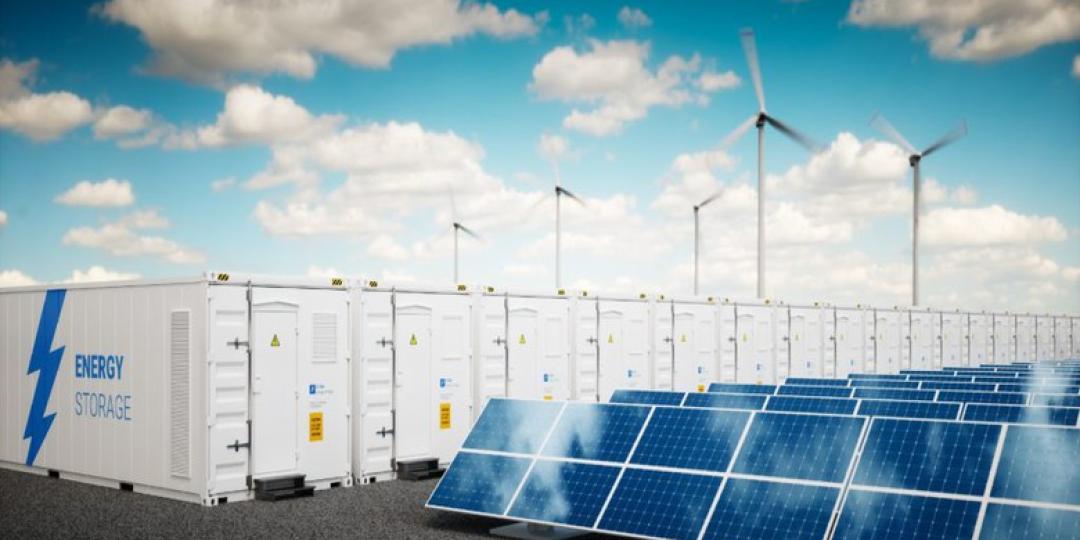by Daniele Gatti, Luke Gear, Dr Alex Holland and Dr Xiaoxi He, IDTechEx
This report from IDTechEx offers a global view on the Li-ion-dominated batteries for the stationary energy storage market. It also includes regional analysis for behind-the-meter (BTM) and front-of-meter (FTM) development, policies, and market players.
Energy storage systems became an unavoidable asset along with the different segments of the electricity supply chain, from generation to transmission and distribution, to consumption. The stationary energy storage market is growing at a very high pace, and to better understand the future development, IDTechEx has released an update of its report Batteries for Stationary Energy Storage. The report addresses the latest adopted policies of the main countries adopting energy storage systems, together with the latest technical improvements, showing the possible future evolution of the battery market toward the next ten years.
Batteries for stationary storage applications are constantly growing, with the announcement of new battery installations on a daily basis. The evolving grid infrastructure, driven by a constant adoption of renewable energies, is facilitating the adoption of storage systems currently dominated by the Li-ion battery.
The fast adoption of Li-ion battery (LiB) in automotive and portable devices has facilitated the cost decrease of this type of battery, fostering their adoption as stationary storage systems. Moreover, the short installation time, and (now) well-regulated market, also due to the experience acquired in the past years, has placed this technology in a favourable position to be adopted on a large scale.
Although LiB is the most adopted and cited technology, other storage systems are approaching the market at different paces. The redox flow batteries (RFBs) are one of them. Based on the flow of electroactive species, this battery is characterised by smaller energy density, but higher cycle life. Moreover, RFBs employ safer active materials than LiBs, therefore the risk of fire is not a concern for these systems. Besides the technical properties, which will allow RFBs to be adopted in specific storage scenarios, the higher upfront cost is currently one of the main restrictions for this technology to compete with Li-ion systems.
Although not literally "batteries', intended as secondary electrochemical storage devices, another class of storage system is also approaching the stationary storage market. These are high power, and long storage systems, investigated by IDTechEx in another report.
These systems, characterised by large power and long storage duration, are addressing the FTM segment of the market and will facilitate the improvement of the electricity grid infrastructure, avoiding the installation of new power lines. High power and long storage duration come with a large device, which therefore requires long installation and time, and upfront cost, although with a reduced levelised cost of storage.
The evolution of the electricity market will soon focus on cost analysis, offering to emerging technologies the opportunity to find their position in the market, even with a greater upfront cost.
The growing necessity of energy storage devices is linked to the growing adoption of renewable energies. The renewable installations are affecting the existing structure of the electricity grid, and the requirement to maintain a constant flow of electricity is creating big opportunities for the energy storage market.
As analysed in the report, stationary energy storage devices can provide different services to the electricity grid. Utility-scale batteries can for example support the power grid, by grid deferral and energy capacity service, among other services. Ancillary services are also another type of service which batteries can provide, to stabilise the power grid. This is currently the most chosen segment.
The requirement for these services is constantly growing due to renewable energy integration, but also because of the decommissioning of coal and gas power plants.
Together with the adoption of batteries in the existing power grid infrastructure, new business models are also being developed, based on the management of battery systems, such as the virtual power plant (VPP) from the agglomeration of several battery units, and the adoption and implementation of Vehicle-To-Grid (V2G) approach. This approach exploits the battery electric vehicles (BEV), which have a considerable battery capacity (100 kWh compared to tens of kWh for home batteries), to provide ancillary services to the power grid.
The stationary storage market is therefore evolving. An increasing number of companies are offering, besides battery storage systems, also solar storage, power purchase agreements (PPAs), and electricity tariffs.
Although the stationary storage market is facing quick adoption, the market is still under the strong influence of political decisions. In fact, the adoption of renewable energy targets, the improvement of the power grid, or the decommissioning of power plants, are all decisions affecting the adoption of energy storage systems.
To understand the current status of deployment of energy storage technologies, and policies adopted by the main countries, IDTechEx forecasted the future evolution of the stationary storage market.
Although similar scenarios exist among different countries, each of the analysed countries presents its peculiarities, in terms of regulations, technical requirements, and adopted policies. Therefore, IDTechEx estimated a growing trend for each of the analysed countries, obtaining as a final result a 38% compound annual growth rate between 2021 and 2031, with a cumulative energy capacity installed above 1 TWh.















